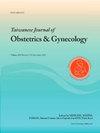KELIM评分和BRCA状态不可靠预测卵巢癌间歇减容手术与腹腔内高温化疗时细胞减少的完整性
IF 2.2
4区 医学
Q2 OBSTETRICS & GYNECOLOGY
引用次数: 0
摘要
目的治疗原发性晚期卵巢癌、腹膜癌和输卵管癌(OC)的金标准是最佳减体积手术加辅助化疗。新辅助化疗后最佳间隔减体积手术(NACT/IDS)与腹腔内高温化疗(HIPEC)提供了比没有HIPEC更好的生存结果。模拟的CA-125消除速率常数k (KLEM)评分反映了NACT在IDS前的反应。BRCA突变可能表明卵巢癌患者对化疗反应更好,预后更好。然而,这两个因素与IDS/HIPEC期间细胞减少(CC)的完整性之间的相关性尚未得到广泛讨论。材料和方法回顾性分析17例HIPEC病例,其中10例为NACT/IDS, 7例为二次细胞减少手术(SCS)。在NACT/IDS组中计算KELIM评分以预测手术残留状态。结果NACT/IDS与SCS的生存率相似。HIPEC术后无主要手术并发症、发病率或死亡率。在IDS组中,5例患者CC评分为0(然而,其中2例患者的KELIM评分不佳),4例患者的CC评分为1,1例患者的CC评分为2,但KELIM评分良好。在SCS组中,3例CC为0,2例CC为1,2例CC为2。HIPEC术后无严重的发病率和死亡率。KELIM评分与CC评分呈弱相关。2例BRCA 1/2突变患者KELIM评分不佳,只有1例患者CC为0。结论在HIPEC技术成熟后,该手术是安全可行的。目前,没有可靠的术前标志物,包括KELIM评分或BRCA1/2状态,可以预测术后CC评分。本文章由计算机程序翻译,如有差异,请以英文原文为准。
KELIM score and BRCA status are unreliable to predict the completeness of cytoreduction during interval debulking surgery with hyperthermic intraperitoneal chemotherapy for ovarian cancers
Objective
The gold standard for treating primary advanced ovarian, primary peritoneal, and fallopian tubal cancers (OC) is optimal debulking surgery plus adjuvant chemotherapy. Neoadjuvant chemotherapy followed by optimal interval debulking surgery (NACT/IDS) with hyperthermic intraperitoneal chemotherapy (HIPEC) provides better survival outcomes than without HIPEC in current literature. The modeled CA-125 elimination rate constant k (KLEM) score reflects the response of NACT before IDS. A BRCA mutation may indicate a better response to chemotherapy and improved outcomes in OC. However, the correlation between these two factors and the completeness of cytoreduction (CC) during IDS/HIPEC has been less extensively discussed.
Material and methods
We retrospectively enrolled 17 HIPEC cases, including 10 NACT/IDS and seven secondary cytoreductive surgery (SCS) cases after database searching and chart review. The KELIM score was calculated in the NACT/IDS group for predicting the residual status of surgery.
Results
The survivorship between NACT/IDS and SCS was similar. There is no major surgical complication, morbidity or mortality after HIPEC. In the IDS group, five cases reached CC scores of 0 (however, two of these cases had an unfavorable KELIM score), four cases reached a CC of 1, and one case had a CC of 2, but with a favorable KELIM score. In the SCS group, three cases reached a CC of 0, two reached a CC of 1, and two reached a CC of 2. There was no serious post-operative morbidity or mortality after HIPEC. The KELIM score showed a weak correlation with the CC score. Two cases with BRCA 1/2 mutation showed unfavorable KELIM scores and only one case reached CC of 0.
Conclusion
After the maturation of the HIPEC techniques, this procedure is safe and feasible. Currently, there are no reliable pre-operative markers, including KELIM score or BRCA1/2 status, which could predict the CC score after surgery.
求助全文
通过发布文献求助,成功后即可免费获取论文全文。
去求助
来源期刊

Taiwanese Journal of Obstetrics & Gynecology
OBSTETRICS & GYNECOLOGY-
CiteScore
3.60
自引率
23.80%
发文量
207
审稿时长
4-8 weeks
期刊介绍:
Taiwanese Journal of Obstetrics and Gynecology is a peer-reviewed journal and open access publishing editorials, reviews, original articles, short communications, case reports, research letters, correspondence and letters to the editor in the field of obstetrics and gynecology.
The aims of the journal are to:
1.Publish cutting-edge, innovative and topical research that addresses screening, diagnosis, management and care in women''s health
2.Deliver evidence-based information
3.Promote the sharing of clinical experience
4.Address women-related health promotion
The journal provides comprehensive coverage of topics in obstetrics & gynecology and women''s health including maternal-fetal medicine, reproductive endocrinology/infertility, and gynecologic oncology. Taiwan Association of Obstetrics and Gynecology.
 求助内容:
求助内容: 应助结果提醒方式:
应助结果提醒方式:


